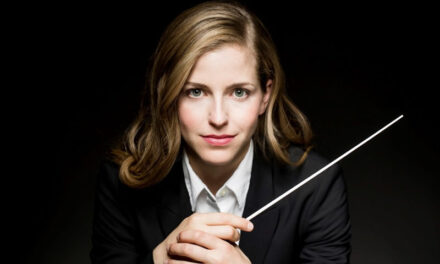Both main attractions on the North Carolina Symphony’s all-Russian program in Meymandi Concert Hall, heard April 13, received well-earned standing ovations from what appeared to be the largest audience that I have seen this season. I had hoped to switch from a seat on the main floor to the upper balcony, where I believe the best-balanced sound can be heard, but it appeared packed. Unless you attended the passionate pre-concert lecture by NCSU faculty member Jonathan Kramer, a former symphony cellist, or noticed the small, terse program insert, you might have been mystified by the first piece on the program. I suspect harsh economic realities, copyrighted music rentals and wages for extra musicians played a role in the switch from Gliere’s seldom-played Suite from The Bronze Horseman to Glinka’s Overture to Ruslan and Ludmila. Glinka can be considered the father of the distinctively Russian School of composition. From Kramer’s brief comments, it’s obvious that I should have read the earliest chapters of Glinka’s Memoires when I prepared a recent chamber music review. Before Glinka, Russian composers imitated the styles of Western composers, especially Italian and French, even modifying popular music in the cities. At birth, Glinka was kidnapped by his maternal grandmother and closeted in a room for most of his early years. There his main influences were the uncorrected folk music of his peasant nurse and the sounds of the town bells. This allowed him to develop a tolerance for dissonance and a willingness to use entire folk tunes, not just take pieces for motivic development such as Beethoven or Mozart would have used. These characteristics were on full display in the other two Russian works on the program. Under director Gerhardt Zimmermann, all the string choirs were fleet as possible in the showy rapid bowing that dominates the Overture. Brass versus string balance was fine with excellent work from the woodwinds and brass. Special praise ought to be given for the wonderfully solid anchor the double basses provided all evening. Their sound was marvelous.
Pianist Dickran Atamian then joined Zimmermann and the orchestra for a fiery performance of Prokofiev’s Piano Concerto No. 3 in C, Op. 26, easily his most popular concerto. Looking nothing like his program photo, Atamian was a ball of barely-contained energy. He was undaunted by the fastest run of notes or the loudest dynamics. I may have heard more poetry in a 1970s performance in Chapel Hill with pianist John Browning and the N.C. Symphony under John Gosling but the orchestra plays on a much higher plane today! The mellifluous clarinet of Jimmy Gilmore opened the concerto and later other woodwinds, such as bassoonist John Pederson, flutist Anne Whaley Laney and oboist Michael Schultz, had significant roles. In both main works played, all the string choirs were impressive; the violins had a sheen never heard in Memorial Auditorium while the cellos were rich, the basses, solid, and only the violas still seem hard to hear as a section in the hall. For them, the sound comes through best in the upper balcony. Atamian had hardly a moment of rest in the fast outer movements. It was amazing to watch him handle the incredibly fast runs, cross-handed scales and machine-like chords. As he gets older, he may want to save his energy when he has rests; for now, he tends to keep in constant motion even when not playing. Zimmermann and Atamian made the piece come across as if it were a tightly wound clock. The woodwinds contributed heavily to evoking poetry in the second movement, along with delicate strings. Meymandi Hall allows a subtlety of quiet dynamics undreamed of in other Triangle venues.
Zimmermann and the orchestra established a new benchmark with their dazzling and intoxicating performance of that old chestnut, Tchaikovsky’s Symphony No. 4 in F Minor, Op. 36. Before the current music director took the reins, guest conductor Lawrence Leighton Smith established benchmarks of just what this orchestra could do with memorable performances of Tchaikovsky’s Fifth Symphony and Dvorak’s Sixth. Zimmermann’s upgrading of the brass sections paid off in stellar fashion in this brazen performance. Hornists Andrew McAfee, Kimberly Van Pelt and three others were glorious in the most spectacular playing I have heard from that section. The woodwinds were outstanding-Gilmore on clarinet, Pederson on bassoon, Laney on flute, Melanie Wilsden on oboe and, cutting through easily on piccolo, Elizabeth A. Lunsford. The sheen of the violin sections was remarkable and the cellos were rich and heartfelt. Once when the cellos shared the violins’ line, I was able to hear the viola section clearly. Basses were rock solid and looked like they were in seventh heaven. Zimmermann was justly beaming at the orchestra during a performance where nothing sounded routine. Bravo!











